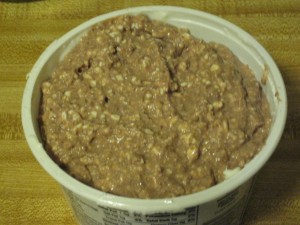Do you think like this?
Most hockey teams skate 3 lines consistently.
Most shifts are about 45 seconds.
If you were thinking about designing an overload-based conditioning program for hockey, the logical conclusion would be to:
- Put together intervals using a 1:2 work to rest (3 line system)
- Have the work intervals be between 30-60 seconds
Not a bad start. It’s certainly better than the old “okay, now jog 8 laps around the rink as a team”. Nothing will guarantee you a slacking, unmotivated, and probably injured team like that recommendation (Admittedly, I’ve both given AND received that type of program in the past, so don’t despair if that’s what you’re using now. Read on…).
Think about this:
Most shifts last 30-45 seconds, ON THE CLOCK. In real-time, this typically translates to 2-3 10-15s shifts, with stoppages of play interspersed throughout.
Even within a continuous 45 second shift, rarely are players skating full speed throughout. Usually shifts are broken up by periods of gliding and stopping altogether.
There’s nothing wrong with conditioning using:
10 x 20s work and 40s rest intervals
or 8 x 30s work and 60-90s rest intervals
A unique conditioning model
Keeping in mind the demands of a hockey game, I’ve been spending more time playing around with interval conditioning like this:
- 12 x (30s work 1/10s work 2)/30s rest
- 5 x (4 x (10s work/20s rest))/2min rest
In the first example, the players would alternate the work times so that the protocol would go:
30s work, 30s rest, 10s work, 30s rest, 30s work, 30s rest, 10s work, 30s rest, etc., with every work interval counting toward the 12 so that they’d perform 6 x 30s work intervals and 6 x 10s intervals.
In the second example, the players would perform 4 sets of 10s work then 20s rest in a row (2 minutes total), then take a 2 min rest, then repeat this five times through.
Both of these examples allow hockey players to work at work:rest ratios that are more similar to what they face in games, maximizing the on-ice carryover.
I hope that makes sense. Keep working hard.
Please enter your first name and email below to sign up for my FREE Athletic Development and Hockey Training Newsletter!




 Use CODE: "Neeld15" to save 15%
Use CODE: "Neeld15" to save 15%